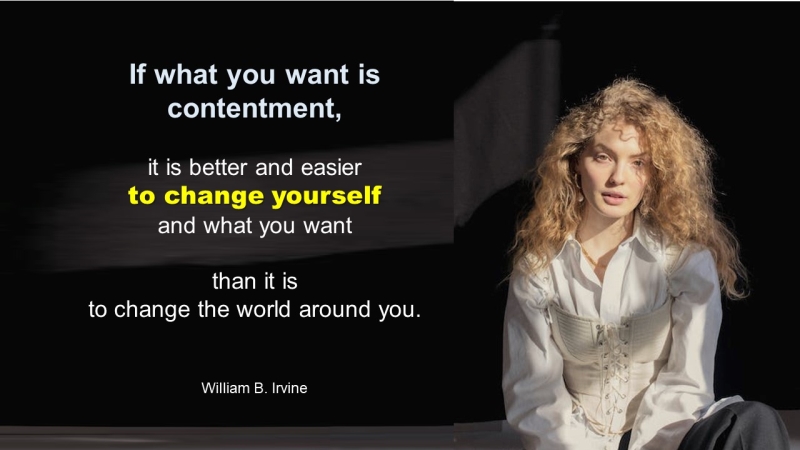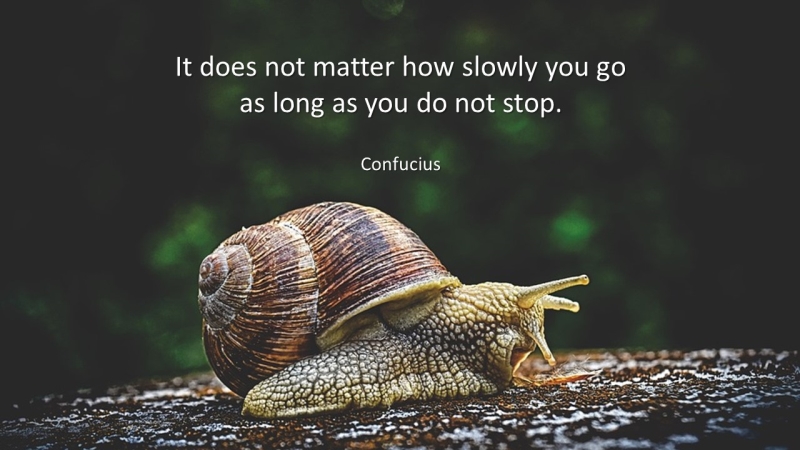
The Ultimate Guide to Self-Transformation for a More Fulfilling Life
ARE YOU STUCK IN YOUR LIFE AND WONDERING HOW TO CREATE LASTING CHANGE? Are you searching for fulfillment and meaning but need help determining where to begin? If so, you’re not alone. Many of us yearn for a more fulfilling life but find it difficult to know where to begin.
The good news is that self-transformation can be the key to unlocking the life you truly desire. You can create a more positive, purposeful, and fulfilling life by transforming yourself. In this ultimate guide to self-transformation, we’ll explore what self-transformation is, why it’s essential for a fulfilling life, and the steps you can take to begin your transformation journey.
So, whether you’re looking to improve your relationships, boost your career, or simply find greater joy and peace in your daily life, this guide will give you the resources and motivation to make it happen. Let’s get started on this transformative journey together.

Why Self-Transformation is Easier than Changing the World for a More Fulfilling Life.
Self-transformation is the process of changing yourself from within, improving your thoughts, behaviors, and attitudes to become the best version of yourself. While changing the world may seem like a lofty and noble goal, it can also be overwhelming and unrealistic for many people. On the other hand, everyone has the power to do self-transformation, no matter their circumstances. It’s a journey of self-discovery and growth that can lead to a more fulfilling life.
Changing the world can often feel like an insurmountable task, especially when we look at the scale of the issues we face. Climate change, poverty, inequality, and other problems can leave us powerless to make any meaningful impact. Self-transformation, however, enables us to concentrate on the factors we control, such as our thoughts, feelings, and deeds. By making positive changes, we can inspire others to do the same and have an effect beyond our lives. Ultimately, self-transformation is a more achievable and sustainable way to impact the world positively.

Understanding Self-Transformation: Unlocking Your True Potential
Self-transformation is intentionally changing oneself to achieve a desired state of being. It involves exploring oneself, including beliefs, habits, and behaviors, and committing to personal growth and development. At its core, self-transformation is about unlocking your true potential and creating a more fulfilling life.
Benefits of Self-Transformation: Creating a Life You Love
There are numerous benefits to self-transformation, including:
- Greater self-awareness: Self-transformation helps you better understand yourself, your motivations, and your desires.
- Increased resilience: You become more resilient and better equipped to handle life’s challenges as you undergo personal transformation.
- Improved relationships: By working on yourself, you can improve your relationships with others and foster deeper connections.
- Greater fulfillment: Self-transformation helps you create a more fulfilling life by aligning your actions with your values and goals.
Common Obstacles to Self-Transformation: Overcoming the Challenges
While self-transformation can be a transformative process, it has its challenges. Some of the most common obstacles to self-transformation include:
- Fear of change: Leaving one’s comfort zone and taking action can be frightening.
- Negative self-talk: Negative self-talk can be a significant barrier to self-transformation, as it can prevent you from believing in yourself and your abilities.
- Lack of motivation: In the face of obstacles or setbacks, it may be challenging to maintain motivation.
- Limited support: Transforming yourself can be challenging without the support of others.
Despite these obstacles, overcoming them and achieving the desired transformation is possible. You can overcome your fears, silence your negative self-talk, and find the motivation and support you need to create lasting change if you have the right tools and mindset.

Steps to Self-Transformation: Turning Your Dreams into Reality
If you’re ready to transform yourself and create a more fulfilling life, it’s time to take action. Listed below are some steps to assist you on your journey:
Self-Reflection: Understanding Yourself
- Importance of self-reflection: Self-reflection is crucial to self-transformation because it clarifies who you are and what you want in life.
- Techniques for self-reflection: Journaling, meditation, and seeking feedback from others are all effective ways to engage in self-reflection.
Setting Goals: Creating a Roadmap for Success
- SMART goals: When setting goals, it’s essential to make them SMART – specific, measurable, achievable, relevant, and time-bound.
- Prioritizing goals: It’s necessary to prioritize your goals and focus on the ones that will significantly impact your life.
Creating a Plan of Action: Breaking It Down
- Breaking down goals into smaller steps: To accomplish your objectives, you must break them down into smaller, more manageable steps.
- Creating a timeline: Making a plan with a deadline can keep you on track and ensure you don’t waste time.
Taking Action: Overcoming Obstacles
- Overcoming fear and self-doubt: Fear and self-doubt can be significant obstacles to self-transformation, but by recognizing and addressing them, you can overcome them.
- Developing habits and routines to support self-transformation: Establishing regular, productive actions can keep you enthusiastic and on track as you pursue your objectives.
Transformation is a process, not an endpoint. Making a difference that lasts requires consistent work over time. With the right mindset and resources, you have the potential to achieve your dreams and create the life you deserve.

Tools for Self-Transformation: Harnessing the Power of Your Mind and Body
You must care for your mind and body to transform yourself and live a fulfilling life. I have some tools that can assist you in your journey.
Mindfulness: Staying Present in the Moment
- Definition of mindfulness: Mindfulness is staying present in the moment and cultivating an awareness of your thoughts, feelings, and surroundings.
- Benefits of mindfulness: Practicing mindfulness can be beneficial in reducing stress and anxiety, enhancing focus and concentration, and promoting overall well-being.
Meditation: Cultivating Inner Peace
- Definition of meditation: Meditation is a practice that involves training your mind to focus and achieve a state of relaxation and inner peace.
- Benefits of meditation: Meditation has numerous benefits, including stress and anxiety reduction, improved emotional regulation, and improved mental health and well-being.
- Types of meditation: Numerous types of meditation exist, including mindfulness meditation, guided meditation, and mantra meditation.
Self-Care: Prioritizing Your Needs
- Importance of self-care: Self-care is essential to self-transformation. It helps you prioritize your needs and improve your overall well-being.
- Types of self-care: Self-care can take many forms, including physical self-care (such as exercise and healthy eating), emotional self-care (such as therapy and journaling), and social self-care (such as spending time with loved ones).
Seeking Support: Building a Stronger You
- Importance of support: Transforming yourself can be challenging, so seeking help from others is crucial.
- Types of support: Support can come in many forms, including therapy, support groups, and coaching.
Remember, self-transformation is a journey; these tools can help you along the way. By practicing mindfulness, meditation, self-care, and seeking support, you can cultivate a stronger, more resilient version of yourself and create a more fulfilling life.

Overcoming Obstacles to Self-Transformation
Fear of Failure
We all fear failing in some capacity. Normal is the fear of the unknown, but it can be paralyzing. Here are some techniques for overcoming a fear of failure:
- Understanding fear of failure: Fear of failure can stem from various sources, such as past experiences, negative self-talk, or societal pressures. It can cause us to feel anxious, self-conscious, or even hopeless.
- Overcoming fear of failure: One way to overcome fear of failure is to reframe your thinking. Instead of viewing failure as a negative consequence, consider it a chance to develop and learn. Remember that failure is not final, and every mistake is a chance to try again.
Self-Doubt
Self-doubt can be one of the biggest obstacles to self-transformation. Here are some ways to overcome self-doubt:
- Understanding self-doubt: Self-doubt is often rooted in negative self-talk, past experiences, or a lack of confidence. It may lead us to question our judgment, have second thoughts about our skills, or even give up on our objectives.
- Overcoming self-doubt: To overcome self-doubt, it’s essential to challenge your negative self-talk and reframe your thinking. Focus on your strengths and accomplishments, and surround yourself with positive individuals who believe in you.
Lack of Motivation
We need inspiration even when we know what we want. Here are some strategies for boosting motivation:
- Factors for lack of motivation: Numerous factors, such as feeling overburdened, not having a clear goal, or being burned out, can lead to a lack of motivation.
- Techniques for increasing motivation: To increase motivation, break your goal into smaller, manageable tasks. Celebrate your progress along the way, and use positive self-talk to keep yourself motivated. It can also help to take breaks, practice self-care, and get support from others.

Maintaining Self-Transformation
Self-transformation is an ongoing process that requires patience, persistence, and a willingness to adapt. We’ll look at a few strategies for keeping up your self-transformation journey.
Celebrating Progress
It’s essential to take a moment to acknowledge your progress in your self-transformation journey. Celebrating your progress will motivate you to keep going and give you a sense of accomplishment.
Importance of celebrating progress
Celebrating progress is a way to acknowledge and appreciate your efforts. Additionally, it can encourage you to keep striving for your objectives.
Ways to celebrate progress
Some ways to celebrate progress include:
- Treating oneself to a favorite meal or a massage that one enjoys,
- Enjoying a break and a calm activity, such as watching a movie or reading a book,
- Sharing your progress with friends or family and celebrating together
Adjusting Goals and Plans
Sometimes, your goals and plans may need to be adjusted as you progress on your self-transformation journey. It’s essential to be flexible and adapt to new situations or circumstances.
Importance of adjusting goals and plans
Adjusting goals and plans is necessary to ensure they are still relevant and achievable. It’s also an opportunity to refine your goals and make them more specific and measurable.
Techniques for adjusting goals and plans
Some techniques for adjusting goals and plans include:
- Re-evaluating your priorities and values
- Dividing up your objectives into manageable, more manageable steps
- Seeking feedback from a coach or mentor
Continuing Self-Care and Support
Self-care and support are essential elements of self-transformation. It’s crucial to continue these practices even after you’ve achieved your initial goals.
Importance of continuing self-care and support
Continuing self-care and support is necessary to maintain your progress and prevent burnout. It’s also an opportunity to continue learning and growing.
Techniques for continuing self-care and support
Some techniques for continuing self-care and support include:
- Incorporating self-care activities into your daily routine
- Seeking out a support group or community
- Continuing to learn and grow through personal development activities

Conclusion
Congratulations! You’ve reached the conclusion of The Ultimate Guide to Self-Transformation for a More Fulfilling Life. You’ve gained valuable insights and practical tools to assist you in starting a self-discovery journey, growth, and transformation. Let’s quickly recap what we’ve covered.
We started by defining self-transformation and exploring its benefits. Then, we discussed common obstacles preventing us from achieving our transformation goals. Next, we outlined practical steps to initiate self-transformation, such as self-reflection, goal-setting, creating a plan of action, and taking action.
We also discussed powerful tools for self-transformation, such as mindfulness, meditation, self-care, and seeking support. Finally, we explored ways to overcome common obstacles such as fear of failure, self-doubt, and a lack of motivation.
With all these tools and methods at your disposal, it’s time to start your self-transformation journey. Remember, the journey of self-transformation is not easy, but it’s worth it. You can create a fulfilling, meaningful, and purposeful life.
In conclusion, self-transformation is not a destination but a continuous journey of growth, discovery, and change. Keep celebrating your progress, adjusting your goals and plans, and continuing self-care and support. You are heading in the right direction for a fuller life.
CLICK THE IMAGE TO LEARN MORE





